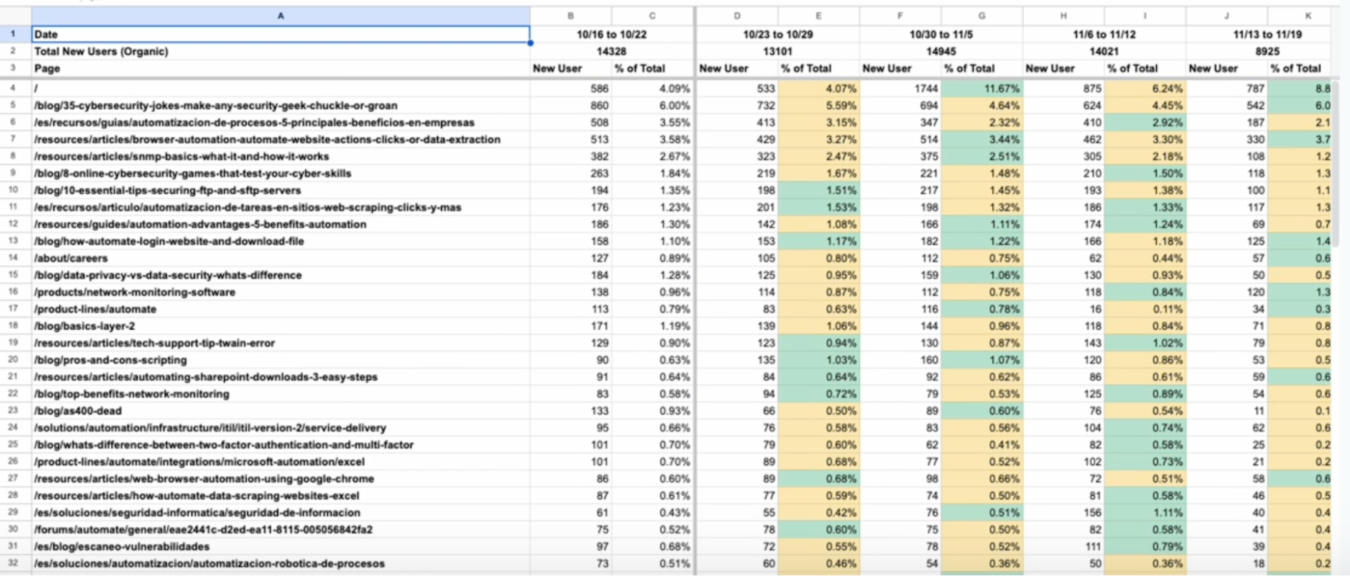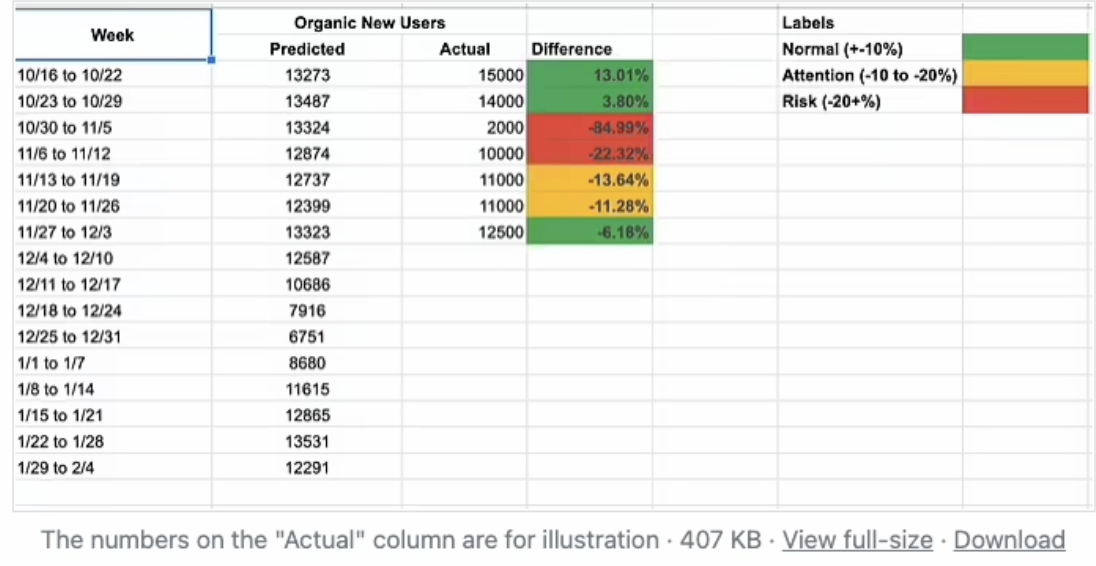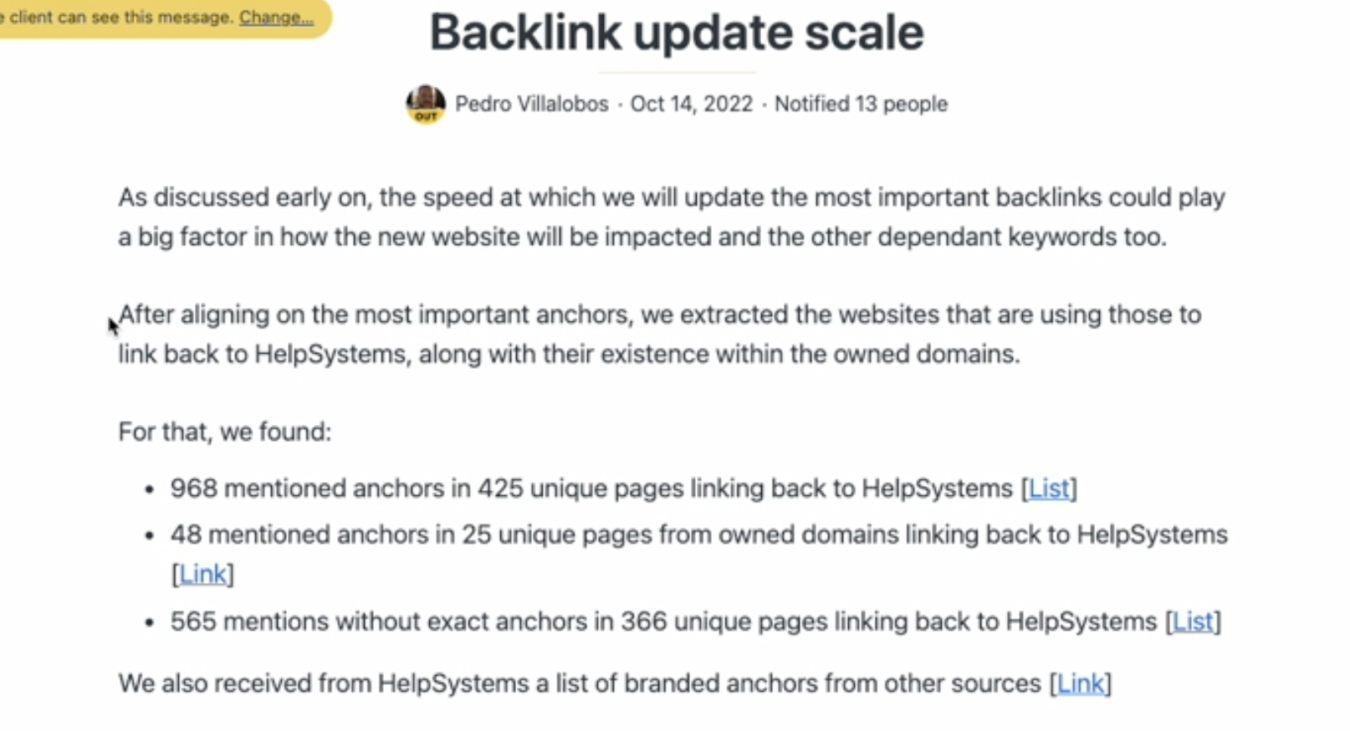B2B SaaS Website Rebranding Playbook: Step by Step Guide
Last updated: March 7th, 2025
We’ve handled several B2B SaaS website rebrands, and the conversation is often sparked because of one of these three scenarios:
- The B2B SaaS company was rebranding and needed the website refreshed to reflect the new brand image.
- The B2B SaaS company was sold to a larger platform brand and the website assets needed to be consolidated and refreshed to reflect the platform brand’s image.
- The B2B SaaS company recently acquired a new add-on company, triggering a website refresh to match the rebrand.
Matching the website’s aesthetics to match the new brand image is typically our clients’ primary concern.
However, a website rebrand has a significant impact on performance.
A poorly executed website rebrand can wipe out a brand’s SEO equity. It can also break the marketing funnel by making it difficult for prospects to find what they need to convert.
However, a website rebrand is also a great opportunity to improve performance by removing friction and providing the right resources prospects need at the right time.
We’ve handled the rebranding process for several B2B SaaS companies, and in this post, we’ll discuss our step-by-step process, including checklists, specific people involved in the process, and key mistakes to avoid.
Opportunities and Risks of SaaS Rebranding
If you’re merging a newly acquired brand into a platform company website, migrating the website can strengthen the platform website by transferring its links and authority to that platform website.
Rebranding an existing website also allows the brand to project a more modern image and creates an opportunity to redefine its mission and purpose.
Yet despite the long-term benefits of rebranding, some degree of negative impact on the website’s authority is inevitable.
The question is the degree of negative impact.
If the website rebrand process is correctly executed, you’ll likely experience a temporary drop in rankings for a few weeks as search engines recognize the change.
In the worst case scenario, a poorly executed migration could result in a brand disappearing from Google entirely for an extended period of time, or even permanently.
Even if the website rebrand is successful from an SEO perspective, there’s also a risk of hurting conversions if the new website design adds friction to the buyer journey.
Our goal is to mitigate the negative impact as much as possible. Fortunately, we’ve done plenty of website rebrands for B2B SaaS clients and have a proven step by step process.
In this post, we’ll share our step by step process along with critical checklists to ensure your SEO authority is protected and even improved. We also identify and remove friction in the buyer journey so that conversion rates remain stable or even outperform the previous website.
Assembling The Right Team For A SaaS Rebrand
A website that effectively drives conversions is aesthetically pleasing, technically accurate, and aligns with the user journey by delivering the right message at the right time.
Each of those three elements requires a specialized skill set, making the hiring process tricky. A team that specializes exclusively in one area (e.g., aesthetics, technical accuracy, buyer journey optimization) could deliver a website that’s excellent in one area but lacks in the other two, rendering the website ineffective.
For example, a web design agency can deliver an aesthetically pleasing website, though it might overlook critical SEO elements, like internal linking, costing the brand rankings in the search results.
Similarly, an SEO agency might deliver a technically accurate website that ranks for important keywords but lacks a compelling narrative and polished brand image.
This is why hiring multiple specialized agencies to collaborate on a website migration can often lead to mistakes, as each has its own priorities, systems, and processes.
To avoid these problems, we designed Powered By Search as a full service agency that employs experts in each respective task (e.g., SEO, website design, website development, etc.).
Each individual on our team is an expert in his/her respective field, though all of our team members work from the same playbook and understand how their role fits within the larger project. Working from the same playbook ensures everyone is moving towards the same goal and no step is overlooked.
It’s also important that all internal stakeholders are on the same page before beginning the website rebrand, so our first step is assembling all stakeholders from the client’s team to set expectations. All parties must realize the potential risks of a rebrand and understand that a temporary dip in performance is inevitable.
These are the specific stakeholders we bring together from both the client’s team as well as team members from Powered By Search for the initial website rebrand discussion:
- SEO leaders: Provide technical SEO advice to mitigate ranking drops.
- Web design/development leaders: Deliver an aesthetic design and ensure the website is functional.
- Marketing team: Ensure the website aligns with the user journey and that users see the right message at the right time.
- Executives: Ensure the website projects the desired brand vision and narrative.
Step by Step Playbook For SaaS Rebranding
We have used the step by step process outlined below to help several SaaS companies execute website rebrands.
Migration Process (Benchmark and Baseline)
Before making any changes, assess the current website performance as this baseline will be essential to monitoring performance during and following the migration, and it can also be helpful for identifying issues and troubleshooting.
Here are the specific baseline metrics we assess:
- Branded keywords and corresponding search volume
- Rankings for critical search terms (the highest converting, most relevant search terms)
- Traffic for each page
- User engagement (time on site, pages visited, etc.)
For example, here’s an example of the spreadsheet we used to monitor the weekly traffic for all pages on a recent website migration we executed for a client.

Risk Assessment and Mitigation Planning
Every rebrand has some risk, and there will be a degree of performance decline in the immediate weeks following the migration.
Clearly communicate this fact to each stakeholder involved in the rebrand to avoid any surprises in the aftermath of the migration and ensure that performance goals are adjusted accordingly.
Otherwise, some team members may take drastic actions to combat the initial performance decline, which could ultimately result in more harm than help.
In fact, we do a three month organic search traffic forecast to solidify expectations and ensure each stakeholder understands the degree of impact.

Technical Migration
From a tactical standpoint, here are the main tasks we’re executing before and during the migration.
Identify Pages to Deindex
The first step to executing a technical migration is auditing the blog posts on the existing site and identifying which pages should not be migrated to the new website.
For example, pages with few links and unhelpful content create bloat and negatively impact SEO performance. Instead of migrating these pages, make a list and deindex them.
Consolidate Duplicate/Repetitive Content
When migrating content, consolidate multiple pages covering the same topic into a single, comprehensive page.
This step is particularly important if you’re rolling multiple websites into a single website, as each website may have its own blog post on the same topic, For example, Website A, B, and C may each have a blog post on Cybersecurity 101. Before consolidating Website A, B, and C into Platform Company’s Website, each of the three unique blog posts on Cybersecurity 101 must be consolidated into a single guide that will be placed on Platform Company’s Website.
Even within individual websites, there may be repetitive or duplicate content. For example, Website A may have several posts about Cybersecurity 101 that must be consolidated before the migration.
To consolidate content, create 301 redirects from all original URLs to the new consolidated page. For example, if you have three blog posts about link building, combine their unique insights into one definitive guide, and then implement 301 redirects from the inidivdual link building blog posts to the new ultimate guide on link building.
301 redirects preserve SEO value while cleaning up duplicate content. Be sure to maintain important backlinks and monitor traffic to the consolidated page after migration.
Content Relevancy Audit
Some content on the old website may reflect dated vision, ideas, and even service offerings.
For example, if an SEO agency acquires a PPC agency, its content regarding service scope (and potentially service ideas and vision) should also be updated accordingly.
Make a list of all of these blog posts that will need to be updated following the migration and create notes on specific aspects of them that need to be updated.
Update Internal Links
Internal links help users navigate your website, but perhaps more importantly, they’re critical to SEO performance as they allow search engine crawlers to identify and index your pages in search results.
Check that each internal link will point users to a page on the new website rather than the old one.
Updating branded anchor text with the new brand name is also important. For example, if the old brand name was “Brand A” and the new one is “Brand B,” all mentions of “Brand A” should be changed to “Brand B.”
Update External Links
Update as many external links as possible to direct users to the new website rather than the old one.
Start with third-party websites you can easily change yourself, like G2 and Capterra. Ensure that any brand mentions are also updated to the new brand name. This also applies to brands you have an integration or partnership with.
- Start with profiles you control (G2, Capterra)
- Contact integration partners and close collaborators
- Focus on updating anchor text that uses your old brand name
- Prioritize backlinks from high-authority domains
Regarding organic external links (e.g., links placed in a blog post pointing to your website), it’s best to update each of them to the new website brand name (if it uses the brand name as anchor text) and URL to avoid confusing search engines.
Of course, most larger websites have thousands of external links, and updating every single one is unrealistic. Instead, create a list of the 100 highest authority links and concentrate your team’s efforts on updating those links.
Here’s exactly how we approached this challenge for one particular client:

Updating Google Search Console
Add both your old and new domains to Google Search Console for comprehensive migration tracking. The tool lets you verify domain ownership, monitor indexing status, and track search performance during the transition.
Running separate crawls with and without blog content helps identify technical issues specific to different content types and ensures proper redirection across your site architecture.
Post Migration Checks
Some website functions will inevitably break, or errors will arise. The best approach to mitigating negative impact is to catch and solve issues immediately.
Frequently recrawl the website using Google Search Console, checking for 404, 403, and 500 errors. We also check that critical technical aspects of the website (e.g., buttons on the demo sign-up page) are functioning properly and users can navigate the website as intended.
Additionally, here are three spreadsheets we create before the migration and use to monitor the migration progress:
- Target keywords for migrated blog posts: Create a list of all the blog posts you’re migrating and notate the current ranking of that target keyword then track its ranking position on the new website.
- Index and coverage state of blog posts on the new website: Create a list of all the blog posts migrating to the new website and then track their index (whether or not they appear in Google’s search results) and coverage state (whether the Google Bot can find them) on the new website.
- Index and coverage state of blog posts on the old website: You can duplicate the spreadsheet above, though this one should track the index (whether or not they appear in Google’s search results) and coverage state (whether the Google Bot can find them) of each migrated blog post on the old website.
User Experience and Journey Mapping
The key to a high converting website is showing prospects the right messaging and providing the right resources at the right time.
Our SaaS website best practices guide discusses our SaaS Website Authority Architecture framework, which is how we design and develop a website to align with how prospects experience the buyer journey.
Get the SaaS Authority Architecture Framework
Optimize Your SaaS Website for Maximum Conversions.

Mapping out the user journey is critical to ensure you maintain (or improve) the conversion rate on the new website.
For existing websites that have already completed this exercise, this step primarily reassesses and updates the user journey before transferring it to the new website.
However, we’ve also helped clients roll multiple websites (e.g., acquired brands) into a single platform company’s website, and the user journey for each product is often slightly different.
This presents a more challenging scenario as you’ll have to construct the platform company’s website to accommodate the buyer journeys of multiple personas seeking different solutions.
If you overlook this step, existing customers of the acquired brands may be confused and frustrated if they can’t find what they’re looking for, and you’ll lose new potential prospects in the buyer journey.
Post-Migration Growth Opportunities
Following the migration, there will be plenty of new content opportunities as you’ll need to communicate new service offerings (particularly if the rebrand involves an acquisition) and brand positioning.
Therefore, create a list of new potential content topics before the migration and then tackle these content topics following the migration. Now is also a great time to refer back to the list of blog posts created during the Content Branding Audit step and update those blog posts to reflect your new positioning and service offerings.
Your new content topics will also provide new link building opportunities, so create a list of potential backlinks to pursue for the new domain.
Following the content migration, you may need to adjust your paid media strategy to ensure campaigns reflect the updated brand messaging and product/service offerings. This includes the ad copy messaging, the lead magnets, and potentially the ad creative.
Therefore, audit all of the following ad accounts and ensure they reflect the new branding:
- Google Ads
- Microsoft Ads
- Bing Ads
- LinkedIn Ads
- Meta Ads
You’ll also likely have to reconfigure HubSpot and any other tracking you may have set up.
SaaS Rebranding Case Study
We’ve helped several B2B SaaS companies navigate the rebranding process using the system outlined above, and here’s a brief overview of how the collaboration worked and the results.
Consolidating Multiple Acquired Brands Into A Single Website
This client recently acquired three brands and rolled them into the platform company’s website.
We spearheaded the website rebrand and migration and here were the main goals:
- Retain the authority and traffic of each of the acquired brands and strengthen the platform company’s website.
- Rearchitect the platform company’s website to accommodate the buyer journeys of each of the acquired brands to maintain (and improve) conversion rates.
- Ensure existing users have an excellent first experience (both technically and aesthetically) with the rebranded version of the company to prevent churn.
Before the website migration, this client was collaborating with a web development agency as well as a branding agency, and each contributor was operating with a different playbook.
Operating in silos created confusion and could have led to a disjointed, ineffective website.
Our first step was aligning contributors on the vision to ensure the final website delivered a cohesive user experience. As a full service agency with experts in each respective role of the migration process, our team could speak the language of each collaborator and essentially play traffic controller to more effectively leverage the talents of each contributor.
Another challenge was ensuring the website architecture aligned with the user journey.
As this project involved rolling multiple acquired brands into a single website, we used the Authority Architecture framework to map out the user journey for each acquired brand. Then, we arranged the structure of the new website to ensure every prospect received the right message and resources at the right time to maintain conversions.
It was also particularly important to cross-check the content across the new websites (and the platform company’s website) and consolidate similar blog posts to ensure we weren’t sending similar or duplicate content to the new website.
Then, we deployed the step by step process above and saw a 20% increase in traffic for the next six months relative to the previous year’s metrics.
This client also experienced a 25% increase in new users relative to the same time period from the previous year.
B2B SaaS Rebranding Best Practices and Tips
Most B2B SaaS companies executing a rebrand know they need extensive technical checklists, but checklists are just one element.
To recap the key takeaways from this piece, here are a few of the most critical factors required for a successful rebrand.
Ensure The Right People Are Aligned
The SEO, branding, web development, marketing, and executive team all need to be aligned to ensure the website delivers a cohesive user experience that is not only functional but also effectively leads users to the point of sale.
Set Expectations
Stakeholders must understand that performance will decline to some degree in the weeks following the migration. Document the existing website’s performance and then create a forecast to solidify expectations. This will ensure that each key stakeholder is prepared and will adjust goals accordingly.
Use Checklists For Each Step
Most brands have checklists, though make sure each team understands which checklists they are responsible for and that they’re tracking the right metrics.
Steps are often overlooked when one team is under the impression another is responsible for a specific task.
Explore Growth Opportunities Following The Migration
Following the migration, there are likely plenty of expansion opportunities, including content updating and new backlink opportunities.
Make a list of these opportunities and promptly attack them to ensure customers understand what you now offer. This content also indicates your domain expertise to search engines, which will help you rank for new keywords.
Partner With A B2B SaaS Rebranding Specialist
To avoid missing a step or overlooking key factors, like rearchitecting the website to consider the buyer journey, consider reaching out to the team at Powered By Search.
Our team consists of specialists in each of the roles involved in a rebranding project, including SEO, content marketing, and web development, and they’ve all worked together to execute multiple SaaS rebranding projects.
This means they know their role in the rebranding process and how it fits in with the rest of the project, ensuring the final product delivers a cohesive branded experience.
Reach out to us today to discuss your rebranding goals, and we can help you assemble a roadmap for a rebrand and how to get started.
What you should do now
Whenever you’re ready…here are 4 ways we can help you grow your B2B software or technology business:
- Claim your Free Marketing Plan. If you’d like to work with us to turn your website into your best demo and trial acquisition platform, claim your FREE Marketing Plan. One of our growth experts will understand your current demand generation situation, and then suggest practical digital marketing strategies to hit your pipeline targets with certainty and predictability.
- If you’d like to learn the exact demand strategies we use for free, go to our blog or visit our resources section, where you can download guides, calculators, and templates we use for our most successful clients.
- If you’d like to work with other experts on our team or learn why we have off the charts team member satisfaction score, then see our Careers page.
- If you know another marketer who’d enjoy reading this page, share it with them via email, Linkedin, Twitter, or Facebook.